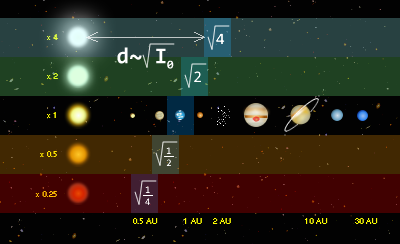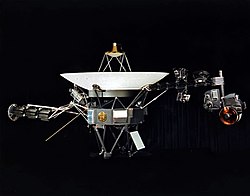Hi,
habitable zone of a star. Sounds like a comfy place, right? Well it can be. It is at least on (tiny portion of) Earth which is an example of object in habitable zone. Such a „zone“ is important for astronomers, or maybe it’s just important for headlines in newspapers.

Habitable zone in a Solar System based on luminosity.
Habitable zone is an area around star where we, with quite limited knowledge on this subject, think that life could be. The simplest „definition“ is that it’s the area where satellite (such as planet) would be able to sustain liquid water. We cannot be sure of course if life needs it but it is the case for the one that evolved on Earth.
The true habitable zone is something a bit more complicated. The simplest case of a planet would be one that behaves as a black body, that means that it absorbs all radiation (light for example) regardless of its wavelength. This is immediately just an assumption because such a planet does not exist. Earth just as Uranus or Mercury reflect light, the planet’s albedo describes this. Albedo is an attribute telling us how much object reflects light. 0 means that it is a black body and 1 means that it is white body aka perfect mirror.
There are even more factors that one could consider. For example, when planet has thick atmosphere it can sustain liquid water (and life) even further out from habitable zone on the other hand if that happens to planet like Venus which is already pretty close, you have got hell. If satellite orbits with high eccentricity the conditions are again different.
It’s hard to combine all of this together which results in lot of different outcomes depending what model one picks. Estimates for Solar System are between 0.9 or even 0.6 to 1.3, 2 or 3 astronomical units. In most of them Earth is just on the inner edge. These numbers were pulled from Wikipedia.
When we hear in news that a new exoplanet was found in a habitable zone it might not mean much. This news usually come alongside the information that the planet has similar size that of Earth, it’s not like we could travel there or anything, now we are mostly collecting data and learning.
Dragallur
HZ picture: By Habitable_zone-en.svg: Chewiederivative work: Ignacio javier igjav (talk) – Habitable_zone-en.svg, CC BY-SA 3.0, https://commons.wikimedia.org/w/index.php?curid=8462897







